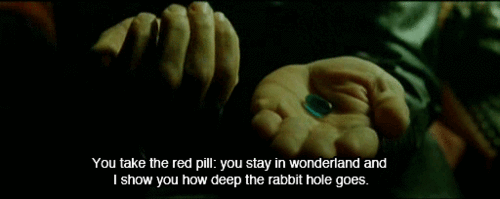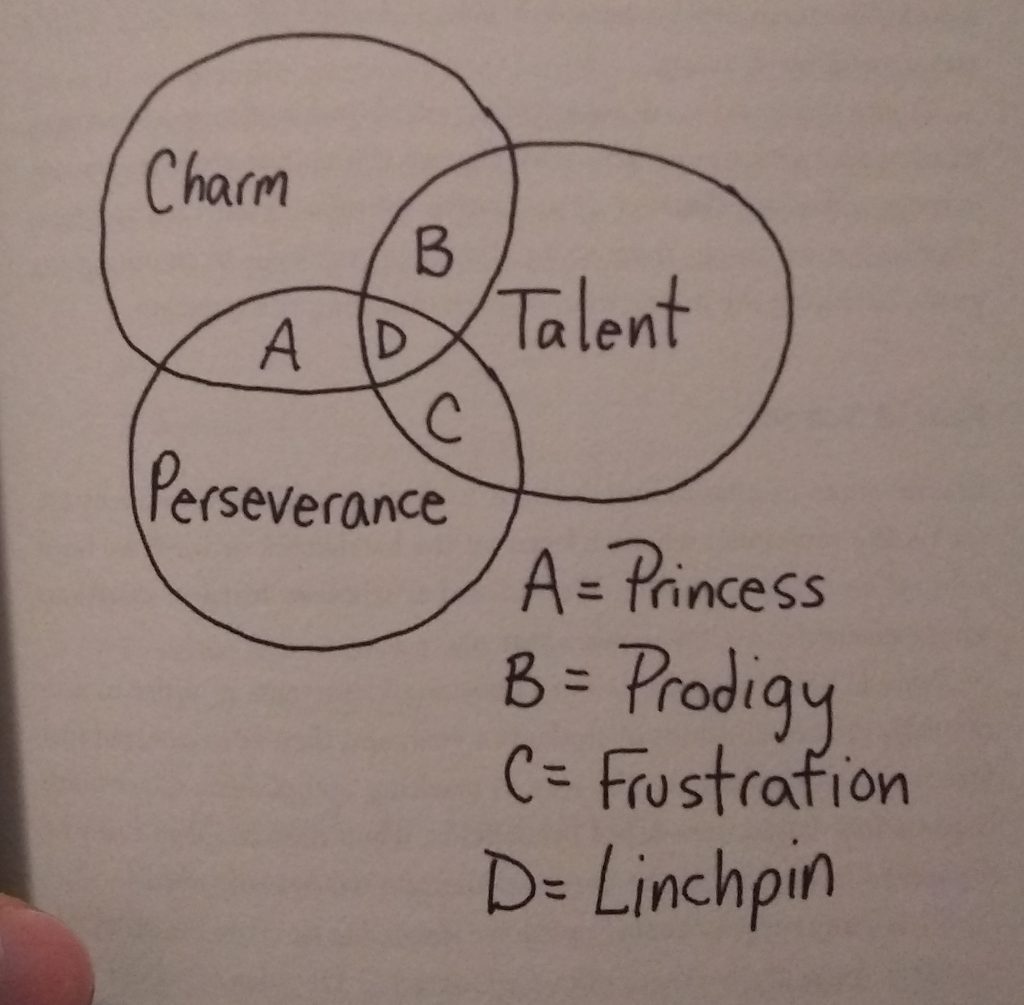As legendary start up lore would have it, Richard Branson, the founder of the young empire, Virgin Records, was stuck at an airport in Puerto Rico in 1984. He was trying to get to the British Virgin Islands to meet his girlfriend. Frustrated by the situation, and perhaps his lack of control, Branson looked around the airport and found a private plane to charter. He returned to his gate and with a small blackboard announced that Virgin Airlines was flying passengers for a small fee. He quickly sold all the seats and used the proceeds to pay for the flight. The Virgin empire expanded into the airline industry. Once again, Richard Branson proved that he was a linchpin.
Red Pill or Blue Pill?
Seth Godin, author of Linchpin and one of the most popular bloggers ever, defines a linchpin as
“an individual who can walk into chaos and create order, someone who can invent, connect, create, and make things happen.”
Unfortunately, the system (educational, economic, social) is built to train people to become cogs in the factory wheel, engines of productivity, with no regard for the “art” or creativity that a person can bring to the table. However, Godin believes that we all have a choice in becoming linchpins. What will you pick? Red pill or blue pill?

Overcome the Resistance
At the same time, most people are also afraid of becoming linchpins. Standing out is a scary proposition because there is risk of failure, ridicule, and loss. Godin calls this fear “the resistance.” It is something all creators and leaders go through. The self-doubt. The wavering confidence. The incessant worry. But to become a linchpin, we must overcome the resistance and share our ideas and talents with the world. I feel the resistance every time I post a new article, plan an event, or speak to a group. I get nervous and my heart starts racing. Every single time I have to ignore the resistance, push on with it, and tell myself everything will be okay. And luckily, it usually is.

Give, Give, Give
The Internet is an essential component to Godin’s philosophy. With the way it has disrupted industries, Godin believes that the Internet has upended the traditional employer-laborer model. No longer do we need the factory to provide people with the living. The web awaits as a platform to share our art, our gift, our contribution to the world. Godin’s use of the word gift is important because he believes that we must be as generous as we can. The more of our time we give, the more of our thoughts we share, and the more value we bring to our work, the better off society will be.
However, Godin recognizes that not everyone can just quit their job and start a thriving business. Some of us need to work in our modern “factories,” behind our computers and in our cubicles. The crushing load of our society’s debt, the demands and expenses of having a family, and other myriad costs necessitate that not everyone can move into a garage to move fast and break things. Sometimes we need the stability so that we can stay afloat.
So Godin’s solution is for us to be generous. Value is added by giving your time and energy. When I think about how this applies to healthcare and my next step as a resident, this means being humble enough to ask for help. It means getting to know everyone in the emergency room by their first name. Remembering the details people share with me. Spending extra time teaching the medical students. Showing up on time. Being professional and compassionate with the patients. Exemplifying leadership. Volunteering for committees. None of these things will get me paid more. But they will make working in the emergency room easier for everyone. We can succeed in our goals of seeing patients and providing them with the best possible care. The key to being successfully generous is to not expect anything in return. Give and then give some more.
Chart Your Own Path
At this point, you might be asking yourself, this sounds great, but how do I become a linchpin? And here Godin seems to fall short, saying that there is no map to becoming a linchpin. All he can do is tell you what it is, but not how to get there. Because if there was a map, a bonafide step-by-step guide to becoming an influencer or founder, wouldn’t everyone be successful? While everyone’s path and situation are indeed different, I believe that there are some steps we can take to becoming linchpins. Things like don’t complain, look for solutions, practice generosity, read, and never stop learning. But Godin is right in that, in order to be a linchpin, you shouldn’t wait for people to give you instructions or tell you what to do. Linchpins chart their own paths and take initiative.
Don’t Travel Alone
Seth Godin emphasizes that no one can be successful alone. Anyone who is accomplished needed help to get to where they are. Emotional intelligence is essential today because no one can see the value in the products or results you create if you are not in tune with the people around you or are difficult to work with. Reach out, ask for help, and collaborate. Being open to other people’s thoughts and feelings will expose you to ideas you did not thing of, while also opening the door to cooperation, friendship, and connection.

Linchpin is primarily concerned with whether or not you can be an indispensable part of any team you work on. Godin is insightful and there are way more lessons that can be derived from his work than I discuss here. Like his blog, his writing is direct, easy to read, and thoughtful. He genuinely cares and it shows. And now the challenge has been posed and the choice is yours. Are you ready to be a linchpin?
My rating: 7/10
Get the book on Amazon: